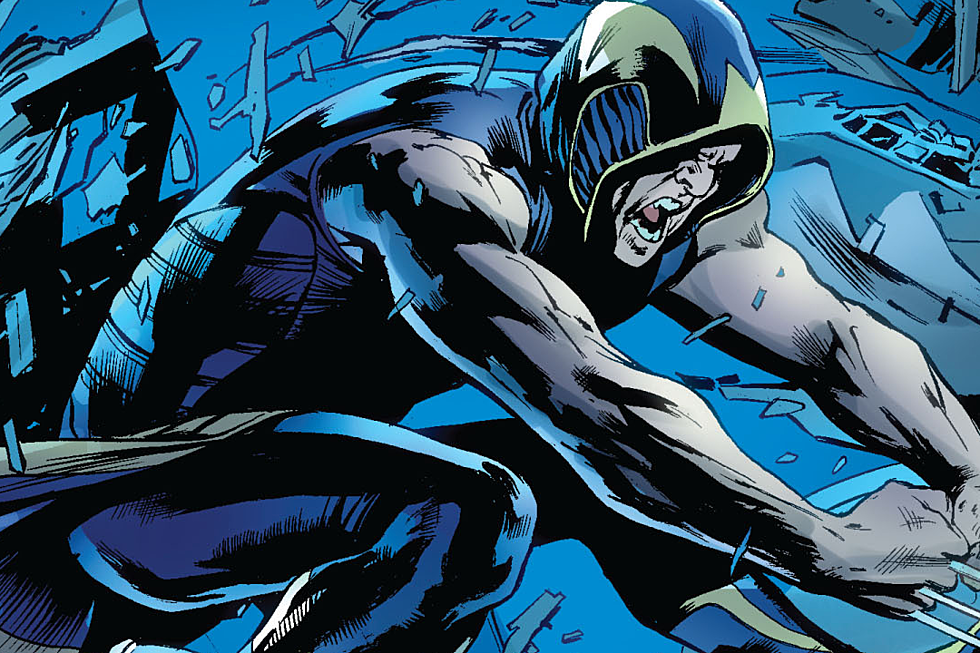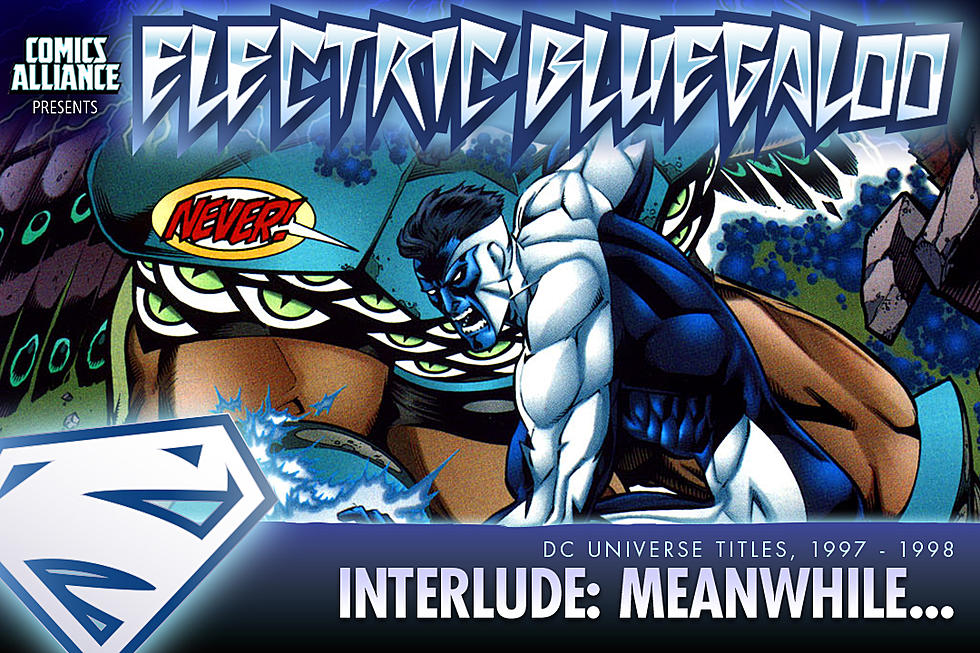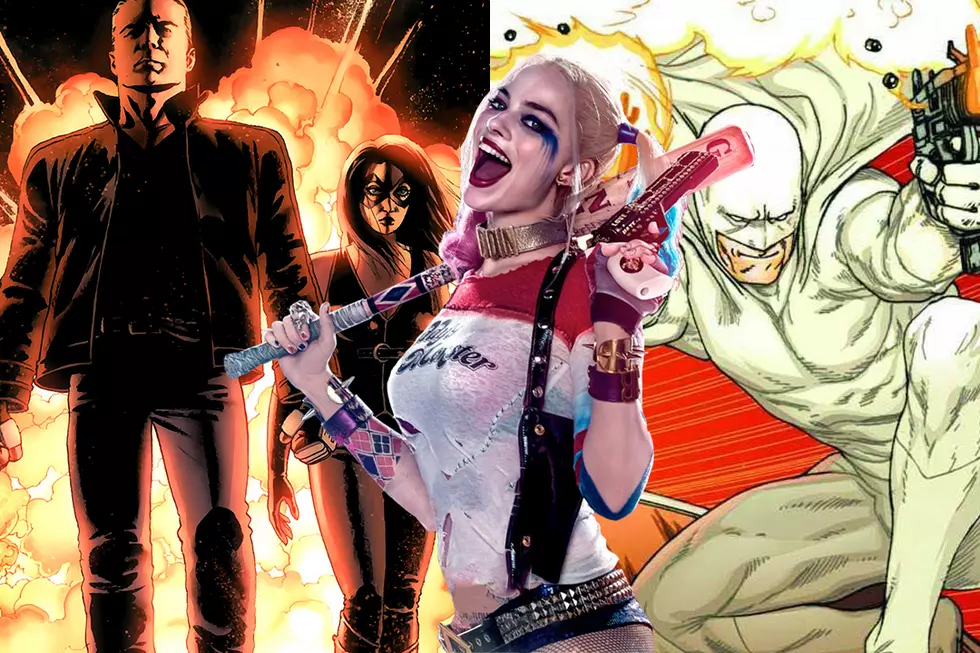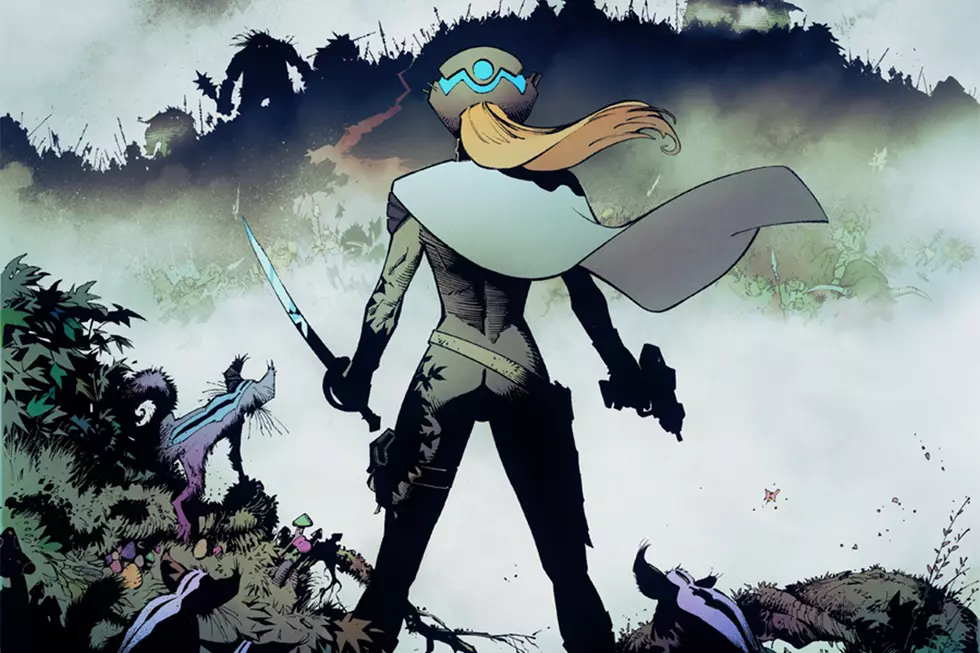![‘Kick-Ass 2′ #1: A Straight to Paper Movie [Review]](http://townsquare.media/site/622/files/2010/10/kickasspage1.jpg?w=980&q=75)
‘Kick-Ass 2′ #1: A Straight to Paper Movie [Review]

Of late, Mark Millar seems quite interested in making movies. And I, for one, encourage him in this goal. But as his writing has skewed even more towards over-the-top action scenes and a number of his original titles have been turned into successful films, I can't help but get the sense that Millar has started to move past comics. And at about the same time, I've started to move past being interested in reading comics written by Mark Millar. The return of Kick Ass, a comic that I didn't enjoy which was turned into a movie I also didn't enjoy but was better than the source material, isn't doing much to change that view. Kick Ass 2 released its first issue this week, marking another step toward the eventual box office sequel. And I can't help but read it and see a gorgeously illustrated storyboard combined with a rough draft for a screenplay. Which makes me wonder why the comic itself is even necessary at this point.
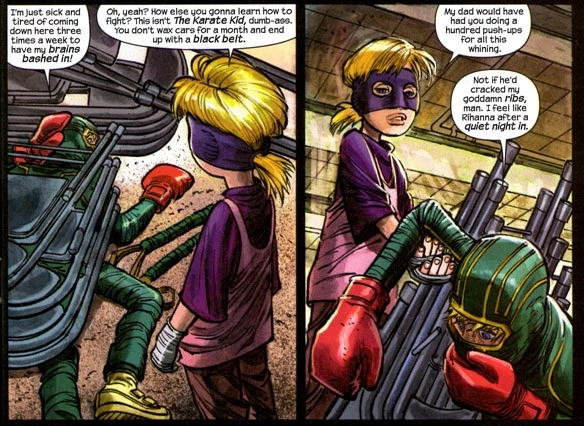
Part of the reason I'm so down on the book is it marks the return of Dave Lizewski (a.k.a. Kick-Ass), one of the least likable protagonists in recent memory. Dave holds true to his not-so-lovable loser persona here, still living a cursed social life in school, and still turning to his superhero identity as the costumed vigilante Kick-Ass by night in order to find meaning. And I remain bothered by the book's split personality.
On one hand, both Dave and Mindy "Hit Girl" McCready have serious problems letting go of their vigilante identities. For Dave, it's the best thing that's happened to him in his otherwise miserable life, while for Mindy it's all she's every known, and being an ordinary little girl doesn't come naturally to her. These would seem to be interesting avenues to explore, but just like last time around we get a sentence or two dealing with it before we're treated to pages and pages of nothing but pop culture references and curses, or fighting.
At this point I'd almost rather see Millar abandon any attempts at taking these characters seriously at all in favor of embracing the insanity of the world he and artist John Romita Jr. have created. Because there's a strange insincerity to the moments where character attempt moments of introspection about the trouble in their lives instead of just hitting someone else in the face with a stick, as though those scenes only happen to prop up the book's continued belief that this is a realistic scenario.
The next problem is that much of the initial appeal of Kick-Ass was the book's shock value, and like anything that relies so heavily on shock, to the same impact it'd have to be even more shocking this time around. And it's not. The concept of a deadly little girl who employs more profanity than the drunken staff of a shipyard during surly hour was cute at first, but the novelty has long since worn off, and the surprising violence of Dave's early ventures into amateur criminal beating also doesn't have the same jarring effect it did the first time around. The book needs something new.
We're introduced to the idea of larger community of costumed criminals and crimefighters as Dave starts looking for a group to join. Some of those new faces show promise, and the introductory scene for Dave's new partner Doctor Gravity was a highlight of the book for me, although that's partially because it meant that I only had to listen to Dave half the time. If more new characters mean less of him, then I'm all for it. But, again, if the title character of your comic is the one I find least appealing and interesting, it's probably a sign that something's not working.
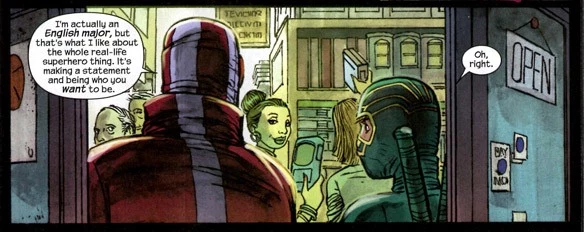
One overwhelming positive that must be noted: Kick Ass 2 #1 looks gorgeous, thanks to the returning art team of John Romita Jr., Tom Palmer, colorist Dean White and letterer Chris Eliopoulos. Last time Romita handled the pencils and Palmer inked the book, while this time around Romita is credited with the breakdowns while Palmer providews finishes and ink washes. And those ink washes really add an overall richness to the images that I'm digging a lot. The art of Kick Ass is the only thing that makes me feel like something of value might have been lost if they'd skipped the comic entirely and gone straight to film.

But on the other hand, I can't shake the feeling that there's not much of a point for keeping this as a comic series. The concept worked far better on the screen than on the page the first time around, and this time it feels even more like Millar is laying out the story scene by scene for the eventual conversion to live action. It's more than the inclusion of Marcus, the cop character from the film who had a cameo in issue 8 of volume 1 and has taken on the role of Mindy's surrogate father. It's more than Dave's continuing attempts to romance Katie, the girl who rejected him after he pretended to be gay in order to get close to her in the comic, which somehow worked as effective foreplay in the film. Which somehow managed to be the least believable thing that happened in a movie that involved a minigun-equipped jetpack and Nicolas Cage fighting crime while doing his best Adam West impression.
These attempts to smooth out the differences between movie and comic are part of why this feels less like an original work and more like a tie-in to the film based on that original work, but even beyond that is an overall approach that invites readers to see the comic as a movie playing out in their heads. In this rare instance, I'd actually rather go into the movie not knowing how the story's going to turn out because I already read the script in monthly installments. I can check out the beautiful art later when Kick Ass 2: The Official Graphic Novel Adaptation of the Major Motion Picture hits bookshelves around the time of the film's release.
More From ComicsAlliance

